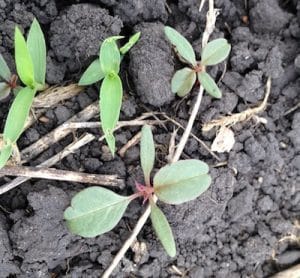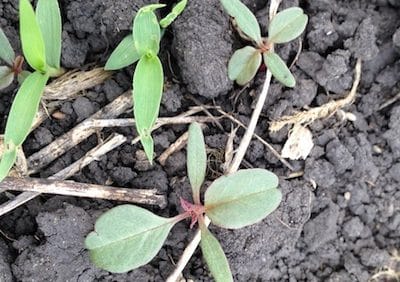We dug into our vast vault of Canola Watch articles to put together this Top 10 list.

1. Early weed control improves yield. Research has shown a yield advantage of 3 bu./ac. when weeds are removed at the 1- to 2-leaf stage of canola instead of waiting until the 3- to 4-leaf stage. That advantage rises to 7 bu./ac. when comparing weed control at the 1- to 2-leaf stage versus the 6- to 7-leaf stage. This earlier timing, when possible due to logistics and weather, can make a big difference to overall crop profit with no added cost. READ THE ARTICLE
2. Tips for spraying in the wind. Use low-drift nozzles. Slow down. Lower the boom. Talk to people who might be affected if drift occurs. READ THE ARTICLE
3. Tips for spraying when weeds are covered in dust. Dust on leaves can reduce the performance of two products: glyphosate and diquat (Reglone and others). The active ingredients in these products are very “charged”, therefore they bind readily and strongly to soil particles, which includes not only dust on plant surfaces, but also suspended soil in spray water. Although spray volumes are usually too low to actually wash dust off surfaces, higher water volumes permit the use of larger droplets which may have better absorption characteristics in the presence of dust. READ THE ARTICLE
4. Too windy and too calm can increase drift. Do not spray in dead calm conditions in early morning, night or late evening. In dead calm, temperature inversions can cause fine droplets in spray to hang in the air and settle anywhere — and often not where you want them. Ground fog or dust that seems to hang in the air is a good indicator of these inversion conditions. This is one important step to avoid drift injury to off-target crops. READ THE ARTICLE
5. Tips to avoid spray tank contamination. Common canola herbicides and surfactants left in a tank for any extended period of time are very good at removing Group 2 and Group 14 residue deposits from tank walls and sprayer plumbing. These residues then mix in with the spray solution. If wind or rain delays spraying, the concentration of this herbicide residue in the tank can continue to increase. One important step, therefore, is to spray immediately after filling and spray until the tank is empty. READ THE ARTICLE
6. Weed control window and strategies for each HT system. Liberty Link: The application window for Liberty is from emergence to early bolting. Roundup Ready: The window for glyphosate on Roundup Ready canola is from seeding to the 6-leaf stage of the canola crop. Clearfield: The application window is 2- to 7-leaf stage of the crop for Ares, and 2- to 6-leaf stage for other IMI products. The article also includes spraying tips and tank mix considerations for each system. READ THE ARTICLE
7. Tank mix tips. Considering a tank mix you haven’t used before? Check the label for each individual product to see if the mix is restricted. Make sure all products are registered for the crop. Follow label rates for all products. You might also want to try a jar test. READ THE ARTICLE Provincial crop protection guides have more information on tank mixing for individual products, and tables with Products Available as Prepackaged Tank Mixes. See page 80 of the Saskatchewan guide. Alberta guide. Manitoba guide. Saskatchewan guide, general.
8. Do you have good water for spraying? Do you test your water source before each spraying season? Water containing calcium and magnesium can reduce the effectiveness of glyphosate and 2,4-D amine. When it comes to hard water, how hard is too hard and what can you do about it? We direct you to SaskAg for more: READ MORE
9. When to spray weeds after a frost. After a light frost, spraying could resume when the following conditions are met: (1) A minimum of one night with minimum temperatures of 5°C (the minimum for biological activity to occur). (2) A minimum of one day of good growing conditions (warm and sunny) have passed. (3) Good growing conditions (warm and sunny) are present at the time of spraying. (4) You see no evidence of frost damage (blackening and water soaked appearance) on the crop or the weeds. “Crop” is included here because even a herbicide tolerant canola crop requires that the metabolism of the plant be working at full capacity to enable it to effectively process the herbicide and prevent injury. The article also describes heavy frost scenarios. READ THE ARTICLE
10. Quiz on useful content in the crop protection guides. These guides are a treasure-trove of pest management best practices, label summaries and more. We created this quiz last year as a way to highlight some of this information. TAKE THE QUIZ
Further reading:
What nozzle should I use? NDSU tips on drift-reducing nozzles
Find all Canola Watch “weeds” articles
You can also use the search tool to find specific weeds and other topics.
Links to the provincial crop protection guides:

